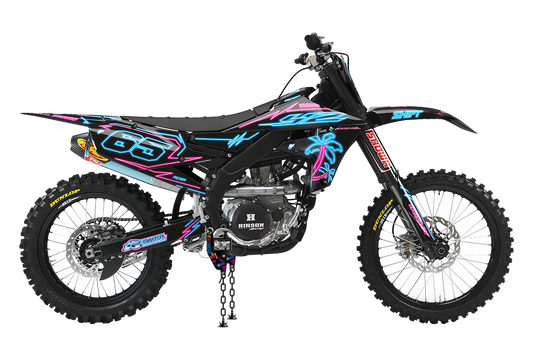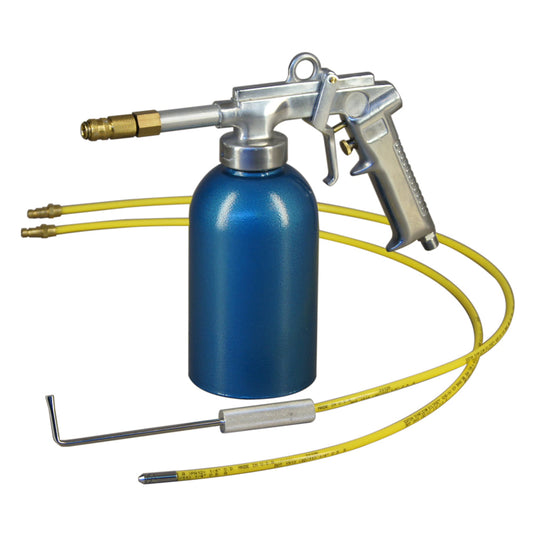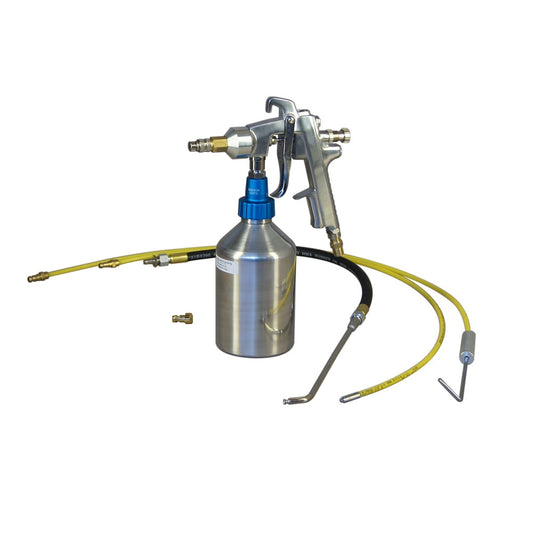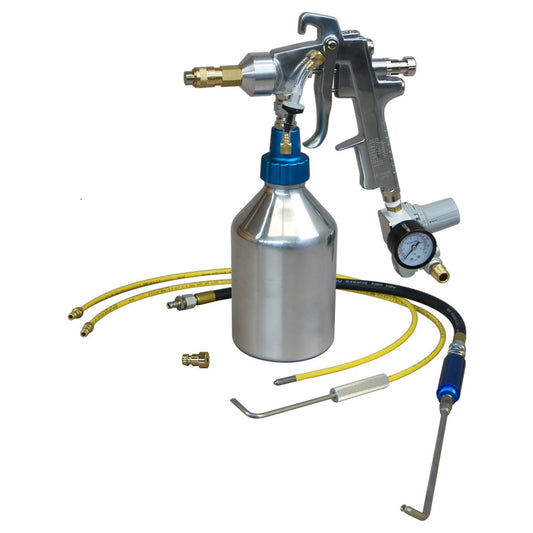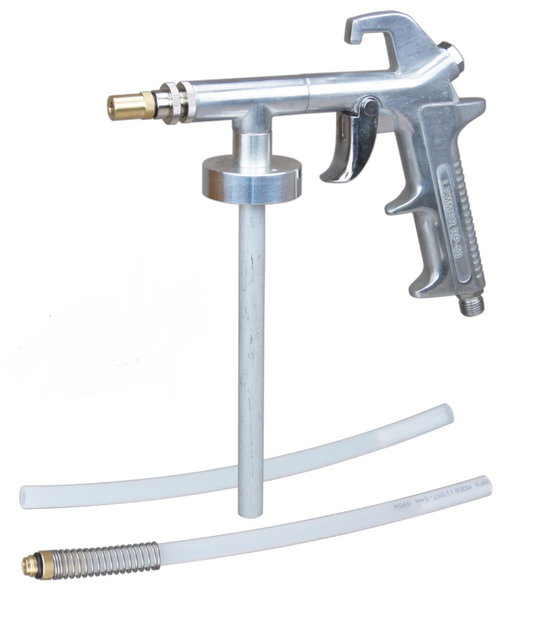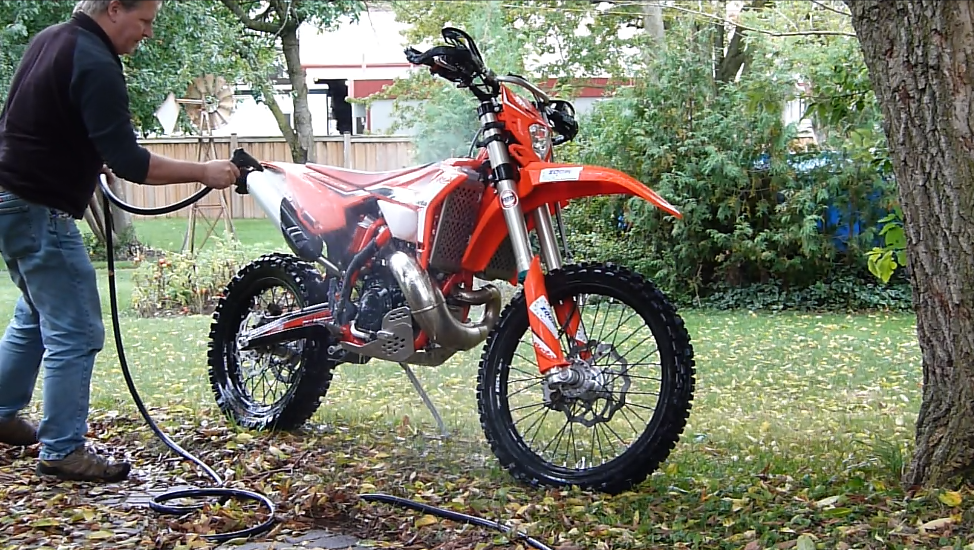
How to Easily Wash and Protect Your Bike/ATV Like A Pro
Since the invention of the 2-stroke engine, dirt bikers and ATVers everywhere have been trying to solve the problem of how to keep their machines looking showroom clean without spending a lot of time, effort and money. This can actually be a lot easier than you think!
First things first, GO GET YOUR MACHINE DIRTY & HAVE FUN DOING SO! 🙂
Then, once you’re done getting dirty, you are going to need some basic bike washing equipment. You will need:
- Garden hose and spray gun. Optionally, you could use a pressure washer. Note, if you use a pressure washer, be sure to keep the spray tip at least 24″ from any mechanical parts.
- Garden Weed sprayer (or foam cannon, with power washer)
- Soft car wash brush or equivalent
- A good cleaning agent.
That’s it! You don’t need all the tools and contraptions, pails and other stuff that many people are always trying to sell you.
You will want to use a cleaning agent that contains high levels of strong wetting agents, and dirt release agents so you don’t have to do any scrubbing or tedious detailing in tight areas, nooks and crannies, etc. It is also helpful to have a cleaner with some chelation ability. Chelating agents promote the dissolution of scale, stone, and scum from hard surfaces. Ideally, your cleaning agent will be available in concentrate form, so that you get great value for your money. Even better, a cleaner that is safe to use, environmentally friendly, affordable, won’t damage surfaces, and is easy to use is a bonus. Our favourite cleaning agent to use is Zoom as it meets all the above criteria.
Now that you have gathered the necessary equipment, it is time to start washing your bike. The steps to clean your bike are as follows:
- Remove all heavy accumulations of mud and dirt by spraying water on your machine from the hose/spray gun.
- Soak an area of the vehicle with the water/cleaner mixture that is in the weed sprayer. The wand makes it easy to reach tight areas and ensures that you get the product where you want it. For a dirt bike, you can soak all at once. For a larger ATV, you will need to soak it in sections to avoid the cleaner drying on the machine.
- Let the detergent sit for a few minutes while keeping the surface wet.
- Rinse thoroughly with the garden hose/spray gun.
- If any dirt film remains on the surfaces, you can gently agitate those areas with the cleaning brush or even use the palm of your hand.
- Rinse again.
Note: When washing a street bike, you may be concerned with the bugs that are left on your fairing and windscreen. After you have let the detergent sit for several minutes, agitate those areas gently with a soft brush, wash mitt or cloth to loosen the bugs, then rinse.
- Start your machine and drive it up and down the street a couple of times to put a bit of heat in the engine and to remove a lot of excess water from the wheels, chain, etc.
- Spray all suspension pivot points, axle seals, and other sensitive areas with WD40 or equivalent to remove any remaining water. You can also spray the carburetor/FI and engine for added protection.
- You are all done, now your bike is clean and ready for storage in your garage. If you want to take things a step further, you do have the option of making your machine shine by treating the plastics etc. with a shine/protectant product.
If you’re thinking that 9 steps to clean a dirt bike, Streetbike or ATV is excessive, think again. This whole cleaning process takes less than 30 minutes for a dirt bike or streetbike, 40-60 minutes for an ATV, and 60-80 minutes for a larger Side-by-Side. It also involves very little physical work. Considering the dollars we invest in these toys, spending the time to get it all cleaned post-ride isn’t just cosmetic. The dirt tends to hide problems like cracked plastics, loose parts, or other vehicle damage.
Remember, when looking for a cleaning agent for your toys, you should consider avoiding products that are highly caustic(ie the one in the purple jug), as they can damage aluminum, wiring, brass, and anodized surfaces. Also avoid products that can damage plastics, finishes, and gel coats, or have high levels of certain petroleum distillates. In addition to harming your machine, these types of products can be harmful to the environment. To learn more about cleaning products that don’t harm the environment and really do work, visit Here
Thoughts, comments, or questions? Have your say below in the comments;
